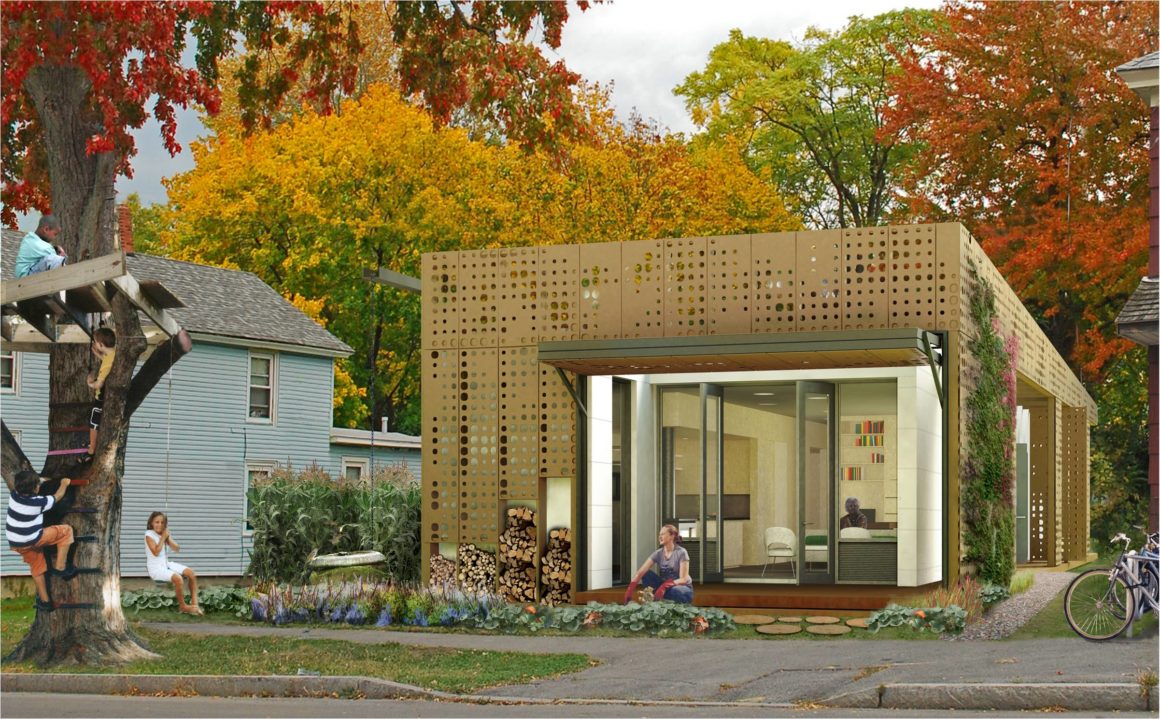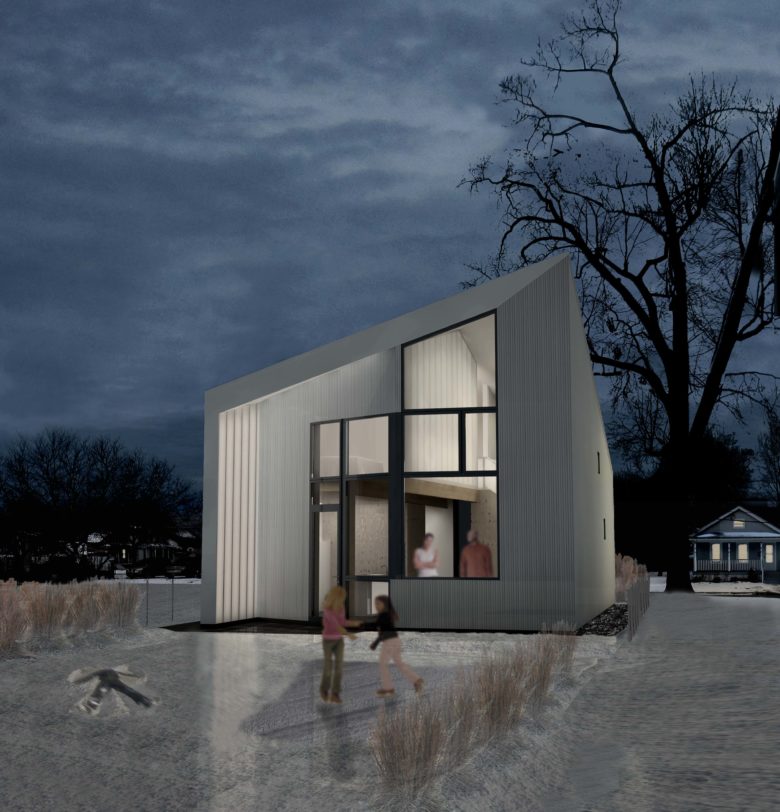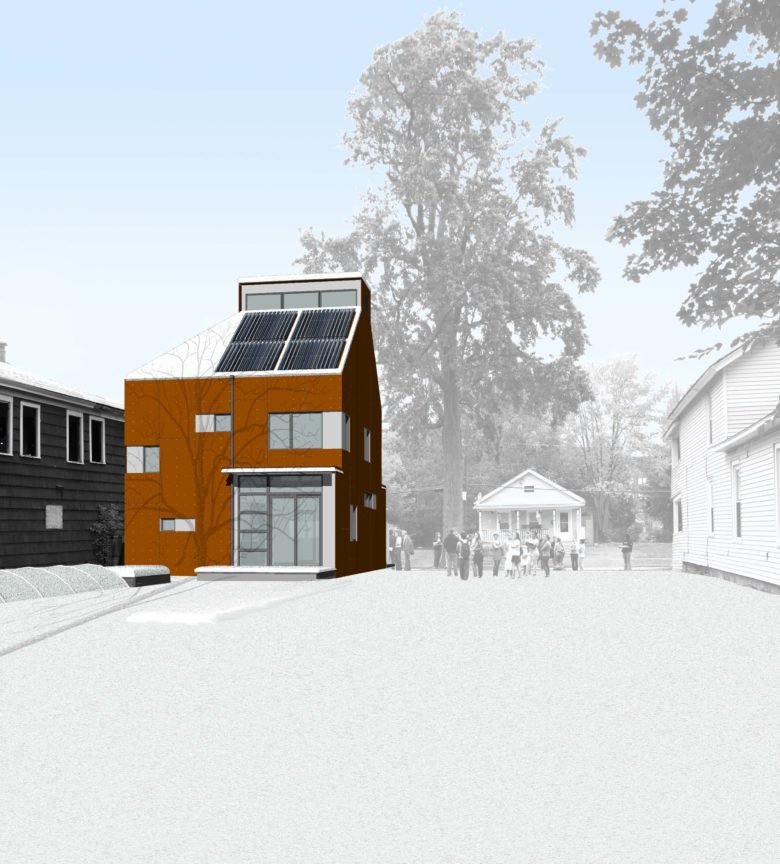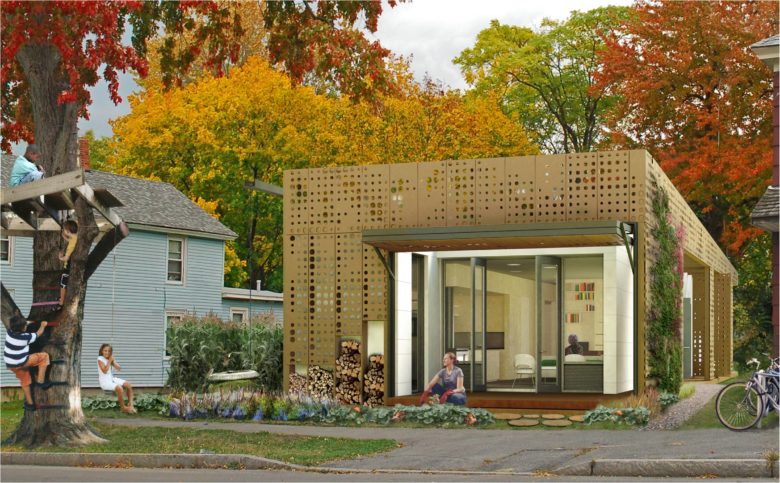
How can sustainable dwellings act as catalysts for reviving entire neighborhoods?
Based on a design competition of the same name, From the Ground Up: Innovative Green Homes featured the winning designs for 1,100-1,500 square-foot single-family homes that could serve as cost efficient, green prototypes for once vital, urban residential neighborhoods throughout the United States. The competition and related exhibition argued that the history of modern architecture can be read through the evolution of the single-family home. Each generation has sought to improve upon earlier iterations, rethinking and reinventing this seemingly simple building type. At certain historic moments, new ideas about domesticity have given form to radically different configurations of home and community.
At the time of the competition, the necessity for sustainable communities provided urgency and a unique opportunity to design affordable houses that responded to economic, social, and environmental challenges. “From the Ground Up” sought to provide a new model for once vital, urban residential neighborhoods throughout the United States through the creation of affordable, green homes. The proposals of the seven finalists were displayed in our gallery, selected from the fifty-two teams that submitted “sketchbooks” with ideas on how to approach this design challenge. Developed for a vacant infill site in Syracuse’s Near West Side, these projects offered an array of innovative designs for cost-efficient prototypes that provided a new vision for the neighborhood, which could be embraced by existing and future residents.
jurors
Barry Bergdoll, The Philip Johnson Chief Curator of Architecture and Design, The Museum of Modern Art
Edward Bogucz, Executive Director, Syracuse Center of excellence in Environmental Systems, Syracuse Univeristy
Julia Czerniak, Director, UPSTATE: A center for Design, Research, and Real Estate at Syracuse University School of Architecture
Julie Eizenberg, Principal, Koning Eizenberg Architecture
Bethaida Gonzalez, President, Syracuse University
Carole Horan, Near West Side Resident
David Lewis, Principal, Lewis. Tsurumaki. Lewis
Jason Pearson, President and CEO, GreenBlue
Kerry Quaglia, Executive Director, Home HeadQuarters, Inc.
Mark Robbins, Dean, Syracuse University School of Architecture
Technical Review Panel:
Peter Larson, Principal, Ashley McGraw Architects
Sam Mason, Atleier Ten, consulting Environmental Designers
Printing and Mounting by: ImaPr
Competition finalists:
Adjaye / Associates
do-it-together.org, including BriggsKnowles A+D, THEM (Lynch+Crembil), Derek Porter Studio, and Studio Lisa Maione
Erdy McHenry Architecture + Stenson
Office dA and Architecture Studio Himma
The exhibition represented a project of UPSTATE: A Center for Design, Research, and Real Estate at Syracuse Architecture.
From the Ground Up was sponsored by:
Home Headquarters, Inc.
Syracuse Center of Excellence in Environmental and energy Systems
Syracuse University School of Architecture
Additional support is provided by:
The Central New York Community Foundation
The Community Preservation Corporation
Exhibition Design and Development by:
Julia Czerniak, Director, UPSTATE: A Center for Design, Research and Real Estate at the Syracuse University School of Architecture
Joe Sisko, Senior Director, UPSTATE: A Center for Design, Research, and Real Estate at Syracuse University School of Architecture
Jacob Brown, Fellow, UPSTATE: A Center for Design, Research, and Real Estate at Syracuse University School of Architecture
With additional assistance from:
Mark Robbins, Dean, Syracuse University of Architecture
Mary Kate O’Brien, director of Communications and Media, Syracuse University of Architecture
Marissa Tirone, Assitant Professor, Syracuse University School of Architecture and students: Stephen Kilmek, William Murillo, Timothy Gale, Nilus Klingel, Cristina Webb
Mary Kate O’Brien, Director of Communications and Media, Syracuse University of Architecture
Marissa Tirone, Assitant Professor, Syracuse University School of Architecture
Printing and Mounting by Imagepress



These proposals and the resulting built work demonstrated the value of design within a typically underserved and demographically diverse community. Their ambition was to wed high standards of living with advanced technology and design in the development of small domestic projects, with the hope that they act as catalysts for improving our neighborhoods, creating innovative green homes, from the ground up.